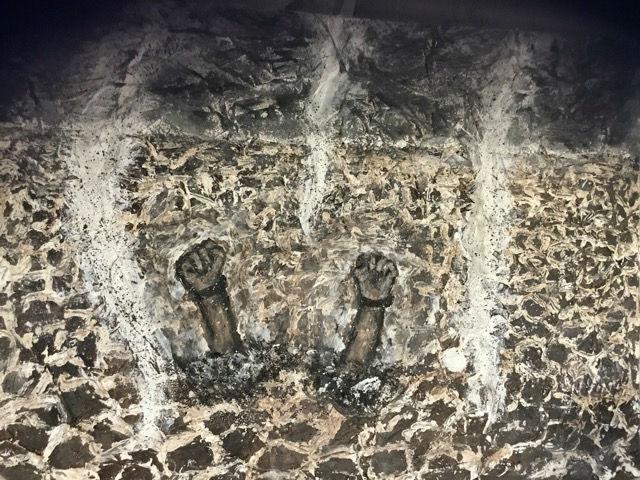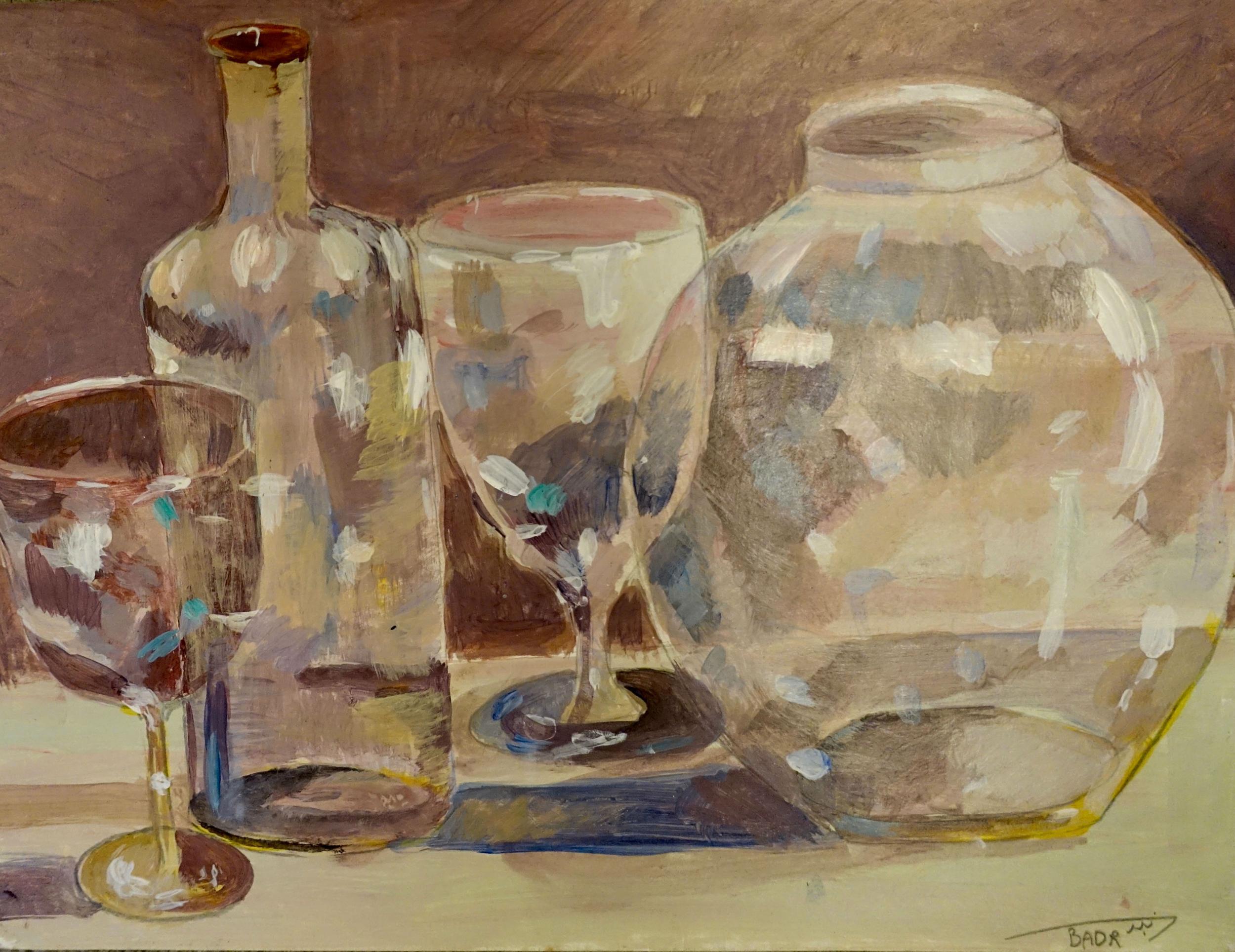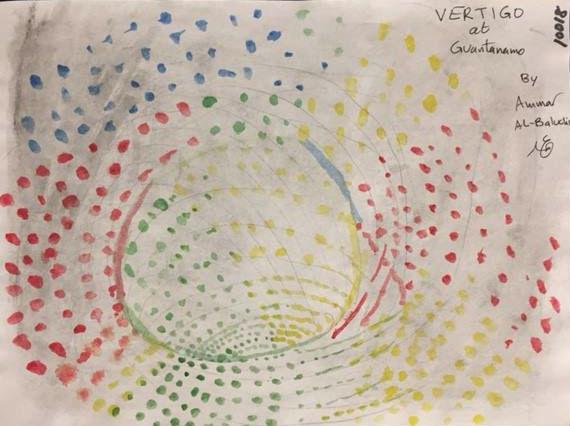The powerful artwork by Guantanamo prisoners America doesn't want the world to see
Exclusive: The US military has been accused of censorship

Your support helps us to tell the story
From reproductive rights to climate change to Big Tech, The Independent is on the ground when the story is developing. Whether it's investigating the financials of Elon Musk's pro-Trump PAC or producing our latest documentary, 'The A Word', which shines a light on the American women fighting for reproductive rights, we know how important it is to parse out the facts from the messaging.
At such a critical moment in US history, we need reporters on the ground. Your donation allows us to keep sending journalists to speak to both sides of the story.
The Independent is trusted by Americans across the entire political spectrum. And unlike many other quality news outlets, we choose not to lock Americans out of our reporting and analysis with paywalls. We believe quality journalism should be available to everyone, paid for by those who can afford it.
Your support makes all the difference.The US military has been accused of censoring art created by prisoners being held at Guantanamo Bay – some of it showing torture and abuse carried out by the CIA and military personnel as part of the so-called “war on terror”.
Many of the 41 prisoners still being held at the prison camp located at the US naval base in Cuba, turn to art for relaxation and to pass the day. In recent months, officials at the jail had reportedly made it easier for prisoners to participate in drawing, painting and model-making.
While prison officials always censored art deemed too sensitive – for example, drawings related to torture or hunger strikes – many pieces made it to the outside world via the prisoners’ lawyers.
But now, after a number of works of art were displayed at a New York gallery, officials at the prison camp have suspended all transfers of art. Furthermore, prisoners have been told all their art is government property and will be destroyed if they are ever released.
“If they get released, they’ve been told their art will be burned,” Erin Thompson, assistant Professor of Art Crime at the John Jay College of Criminal Justice, told The Independent.
Ms Thompson, who has curated the exhibition including art from 12 current or former prisoners – only one of whom has been charged with a crime - added: “They have also been told if ‘excess art’ is found in their cells it will be removed. I don’t know what excess means.”

Ms Thompson arranged the exhibit as a means of providing an insight into the minds of the men who were seized in places such as Afghanistan and Pakistan, as the US responded to the deadliest ever terror attack it had suffered. She said it was important to show the men as human beings, regardless of what they had or had not done.
“Art is supposed to be a window into the soul,” she said. She said the authorities were “shooting themselves in the foot” if they were ignoring the art works produced by the prisoners.
A lawyer who represents eight of the prisoners still being detained at Guantanamo, said the authorities had always censored art they considered sensitive.
Clive Stafford Smith, founder of the UK-based charity Reprieve, said one of his clients, Ahmed Rabbani, who says he is a Karachi taxi driver but whom the US authorities say was linked to al-Qaeda, was held for 545 days at the notorious Dark Prison, or Salt Pit, in Kabul. The site was a clandestine CIA-operated “black site”, where Mr Rabbani was tortured and interrogated, something confirmed by the 2014 Senate Intelligence Committee report on CIA torture.
In testimony to his legal representatives, Mr Rabbani said he was subjected to a medieval form of torture, known to the Inquisition as the “strappado”.
“They took me to a room and hung me by my hand to an iron shackle where my toes hardly touched the ground,” Mr Rabbani told his lawyers. “They removed the mask away from my face and left me hanging from one hand, naked, thirsty, and hungry.”
One of Mr Rabbani’s drawings – a scene of empty plates and glasses – is featured in the exhibition at John Jay College. However, Mr Stafford Smith said Mr Rabbani had shown him a painting of him being tortured.

He said that without giving a reason, the authorities at Guantanamo refused permission for that drawing to leave the prison.
Instead, the lawyer made a detailed note of the painting, and when he returned to Britain, he asked several artists and art students to recreate the drawing. Several reproductions have been made, including one by students from Colfox Academy in Bridport, Dorset.
“So much truth is hidden in Guantanamo Bay, including the long history of torturing people like Ahmed, who has never been charged with any crime, and is in my view guilty of none,” said Mr Stafford Smith.
“A picture paints a thousand words as they say, and I didn’t truly understand how he had been abused until I saw his brilliant pictures of it. I should stress that we pro bono lawyers have to pay for most of his art supplies. It’s not as if that comes out of the millions of our wasted tax dollars.”
One painting believed to portray torture, also confirmed by the Senate report, was painted by Ammar Al-Baluchi and entitled Vertigo. Ms Thomson told PBS the painting was a swirl of lines and dots and had been drawn to explain to his lawyer what happened when he experienced vertigo – the result of a traumatic brain injury he suffered during interrogation.
Shelby Sullivan-Bennis, a Reprieve lawyer, said that for decades, prisons had encouraged detainees to “improve themselves”, particularly by art.
“Part of that includes letting the outside world see what they have done,” she said.
“There is only one reason the art is being censored now, and it is to keep up the pretence that all these people fit President Trump’s silly stereotype of ‘Bad Dudes’, a pathetic deceit of the world.”
The Pentagon referred all inquiries to Joint Task Force Guantanamo (JTF-GTMO), which runs the prison site. Nobody from JTF-GTMO responded to inquiries. The State Department referred inquiries to the Department of Defence. The CIA did not respond to inquiries.
Join our commenting forum
Join thought-provoking conversations, follow other Independent readers and see their replies
Comments